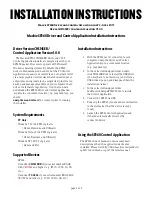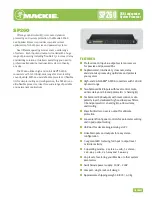
|
Technical basics
117
|
ELSA LANCOM Business 6000
|
EN
There are two considerations when using these IP addresses:
The IP addresses used in a private network should not leave this network,
i.e. an Internet connection is only possible when using IP masquerading,
for example.
The packets for these IP addresses will not be routed in the Internet, i.e.
backbone routers will simply reject such IP packets. Depending on the
provider, serious consequences may result if such IP packets are released
on the Internet.
7.2.1
IP routing and hierarchical IP addressing
Routing-method
Every IP packet contains the IP addresses of the source and of the recipient.
A router receives IP packets at its interface, interprets the destination
address and passes the packets on to those interfaces that are nearest to the
recipient. Finding the appropriate path is called routing.
Routing-table
Every router manages a table (routing table). This table indicates the quickest
interface connection to the host for every host in the network. You can
imagine that, as they grow, these tables may exceed the capacity of the
router—the Internet, as a worldwide linking up of publicly accessible IP
computers contains several millions of hosts.
Hierarchical IP
addresses
For this reason, hierarchical IP addresses were introduced. This means
dividing the IP network into subnets in which IP addresses are appointed from
a coherent numerical range. It is possible to establish several hierarchy
levels, so that different subnets can be merged. The principle is similar to the
hierarchical address used by paper mail, consisting of a country, a city, a
street and a number.
The consequences of this hierarchical IP addressing:
Since all hosts within one network have the same network address, the
host address is sufficient for the hosts within this network to
communicate with one another.
A router has to know both the addresses of the hosts that are directly
connected to it, and the addresses of all networks and subnets that are
reachable via adjacent routers.
It is
not
necessary for a router to know
all
other possible IP addresses.
Summary of Contents for LANCOM Business 6000
Page 1: ...ELSA LANCOM TM Business 6000...
Page 4: ...ELSA LANCOM Business 6000 EN...
Page 10: ...Introduction ELSA LANCOM Business 6000 10 EN...
Page 52: ...Connection via 2 Mbit interface ELSA LANCOM Business 6000 52 EN...
Page 110: ...Operating modes and functions ELSA LANCOM Business 6000 110 EN...
Page 162: ...Technical data ELSA LANCOM Business 6000 162 EN...
















































